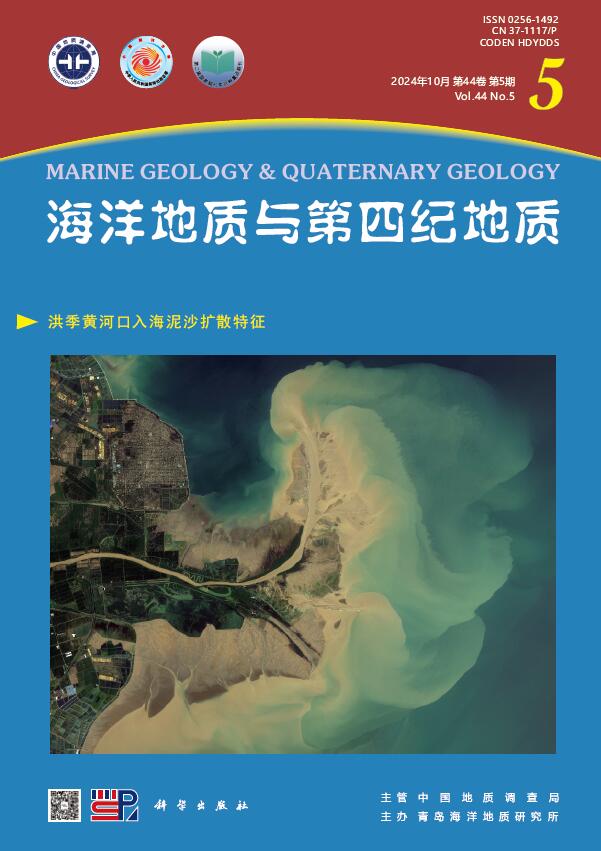SEGMENTATION OF SUBDUCTION SYSTEM IN THE EASTERN SOUTH CHINA SEA AND DYNAMICS OF RELATED BASIN GROUPS: SEGMENTATION OF SUBDUCTION SYSTEM IN THE EASTERN SOUTH CHINA SEA AND DYNAMICS OF RELATED BASIN GROUPS
引用次数: 5
Abstract
The east part of the South China Sea is located at the convergence zone between the Eurasian Plate and the Pacific Plate(the Philippine Sea Plate).To the east of the South China Sea,there are the Manila Subduction Zone,the Luzon Arc and the East Luzon Philippine Subduction Zone,consisting of a opposite-dipping trench-arc-basin system which is called subduction system in this paper.The system can be subdivided into three segments from north to south by the Babuyan Strike-slipping Fault and the Sibuyan Strike-slipping Fault respectively,based on the differences in geomorphology,earthquakes,volcanism,faulting,basins and geophysical characteristics.The north segment is affected by the collision of the Taiwan Orogen,and the NWW-directed indentation of the Philippine Sea Plate and the stopping of the Beikang Uplift to the west of the Taiwan Orogen,resulted in the extrusion of the continental blocks of northeastern South China Sea,and the formation of the Taixinan Basin and the Taixi Basin,which are a series of collision-wedge-extrusion related basins.The middle segment is controlled by "Slab Window" during the subduction of fossil mid-oceanic ridge of the South China Sea,the earthquakes,magmatism,geomorphology and stress fields are different from north to south,and the formation of the basin group is controlled by arc strike-slip faults.The south segment is dominated by west-dipping subduction of the Philippine Sea Plate.The intensive earthquakes and volcanism are near the Philippine Trench.However,the stopping of the Sunda Block and the Palawan Block to the west of the Manila trench and the adjustment of the Great Philippine Fault in the central Philippine islands result in curvature of the Manila Trench in plane and decrease in earthquakes and volcanism in the west of the segment.The basin group is located in the segment developed on the basement resulting from collisions of different block fragments.The adjustment and pull-apart faulting of strike-slip faults caused the present-day basin pattern and distribution.The subduction system in the east of the South China Sea is affected by the NNW-directed indentation in the north segment and west-directed subduction in the south segment of the Philippine Plate,while the tectonic evolution of the middle segment of the subduction system is dominated by the east-directed subduction of the Manila Trench.南海东部俯冲体系的分割与相关盆地群动力学:南海东部俯冲体系的分割与相关盆地群动力学
南海东部位于欧亚板块与太平洋板块(菲律宾海板块)的辐合带。南海以东有马尼拉俯冲带、吕宋弧和东吕宋菲律宾俯冲带,构成对倾海沟-弧-盆地体系,本文称之为俯冲体系。根据地貌、地震、火山、断裂、盆地和地球物理特征的差异,该系统可分别以巴布延走滑断裂和斯布延走滑断裂为界,由北向南划分为三段。北段受台湾造山带碰撞的影响,菲律宾海板块nww向的压陷和台湾造山带以西北康隆起的停止,导致南海东北部大陆块体的挤压,形成了台南盆地和太西盆地,这是一系列与碰撞-楔-挤压有关的盆地。中段受南海古洋中脊俯冲时的“板块窗”控制,南北地震、岩浆活动、地貌和应力场不同,盆地群的形成受弧形走滑断裂控制。南段以菲律宾海板块西倾俯冲为主。强烈的地震和火山活动发生在菲律宾海沟附近。然而,巽他地块和巴拉望地块在马尼拉海沟以西的停止,以及菲律宾大断层在菲律宾中部的调整,导致马尼拉海沟在平面上弯曲,该段西部地震和火山活动减少。盆地群位于不同块体碎片碰撞形成的基底上发育的段内。走滑断裂的调整和拉分作用形成了今天的盆地格局和分布。南海东部俯冲系统受菲律宾板块北段北西向压陷和南段西向俯冲的影响,而中部俯冲系统的构造演化则受马尼拉海沟东向俯冲的支配。
本文章由计算机程序翻译,如有差异,请以英文原文为准。
求助全文
约1分钟内获得全文
求助全文
来源期刊
CiteScore
0.10
自引率
0.00%
发文量
4176
期刊介绍:
Marine Geology and Quaternary Geology launched in 1981 is a bimonthly academic journal sponsored by Qingdao Institute of Marine Geology, China Geological Survey, and published by the Science Press, China.The journal aims to publish original, cutting-edge, and explorative scientific results in the field of marine geology and sea-land Quaternary geology. The journal focus on reporting the latest research achievements supported by National Natural Science Foundation Project, National Key Project and International Cooperation Project, with priority to the results in China seas, global ocean and three poles, and the comparative study results between offshore and land, regional and global scientific issues.

 求助内容:
求助内容: 应助结果提醒方式:
应助结果提醒方式:


